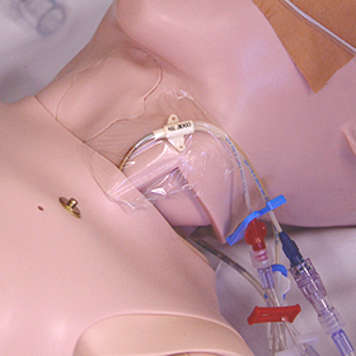Going to the operating room
The operating room (OR) staff will let your nurse and doctor know when they are ready. Usually you will walk to the OR with a transport person.
If you are feeling really anxious, tell your nurse or doctor or the anaesthetist as soon as possible. They may be able to give you some medication to calm you. If you receive this medication, you will be taken to the OR by stretcher or in your bed.
Once you are in the OR, you will be given general anaesthetic through the IV in your hand or arm. This will make sure you sleep through the operation and do not feel any pain.

A type of central line called an IJ will be placed in a blood vessel near your collarbone once you are asleep and before your transplant surgery begins. The transplant team will use this IJ after your transplant to give you medications and take your blood for tests.
Surgery
The surgeon will first make an incision (a cut) in your abdomen (belly) and remove your liver. They will then place the new liver inside and connect the blood vessels of the new liver to your blood vessels. They will also make a new bile duct connection.
When the surgery is finished, the surgeon will close the incision in your abdomen with stitches. In some cases it might not be possible to close the abdomen completely. If so, you may have a special dressing on your abdomen called a VAC dressing. These help your wound heal faster and protect any opening left on your skin. Your incision will eventually close completely.
How long will my surgery take?
Liver transplant surgery usually takes six to eight hours. However, it can sometimes take longer, for example if you have had previous abdominal surgery or have had more than one transplant. The surgical team will update your parents or guardians about your surgery progress, especially if the surgery takes longer than expected.
If you would like to know more, take a look at this 15-minute video of the main stages of a liver transplant from Toronto Video Atlas of Surgery.
Warning: The video includes up-close shots of surgery, including real organs and blood!Because it was made for surgeons, the video might include some language that is hard to follow. However, it also contains some useful clips and graphics to show you what happens during liver transplant surgery.






